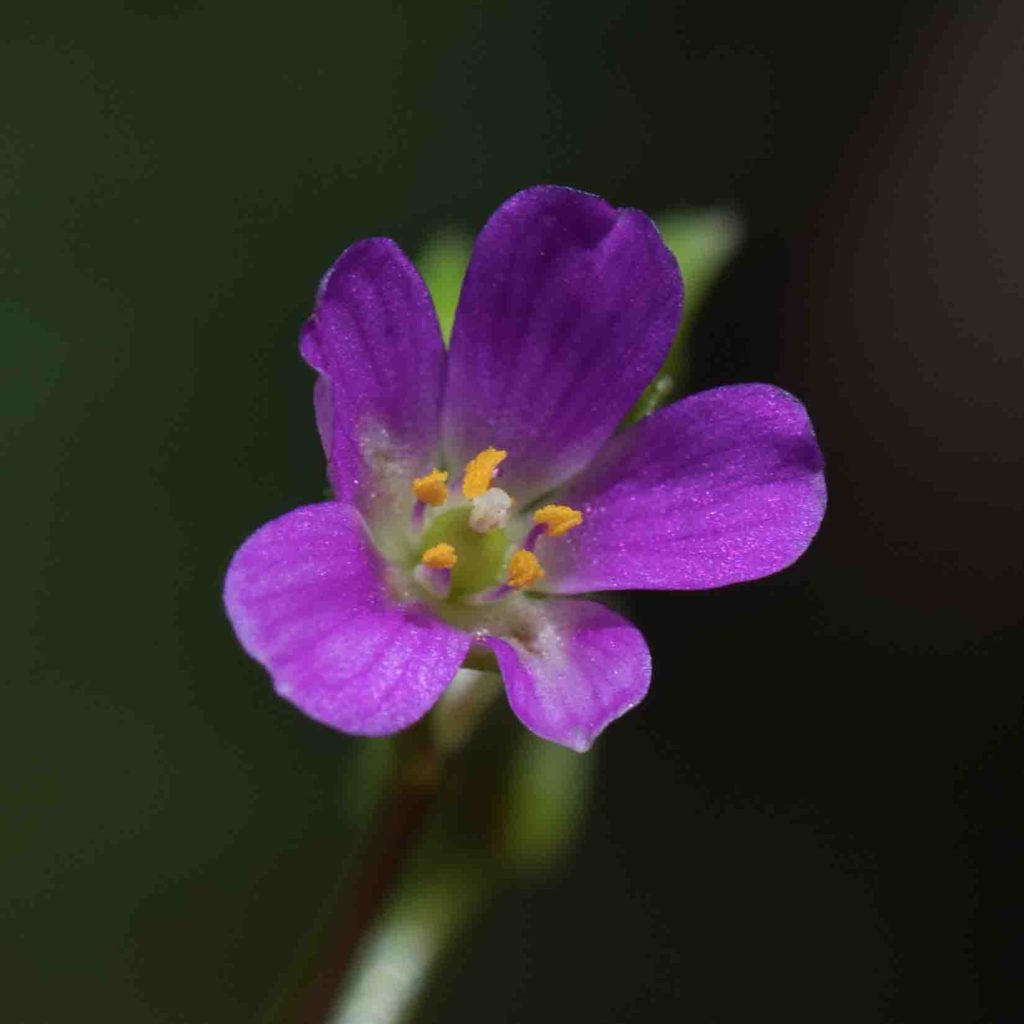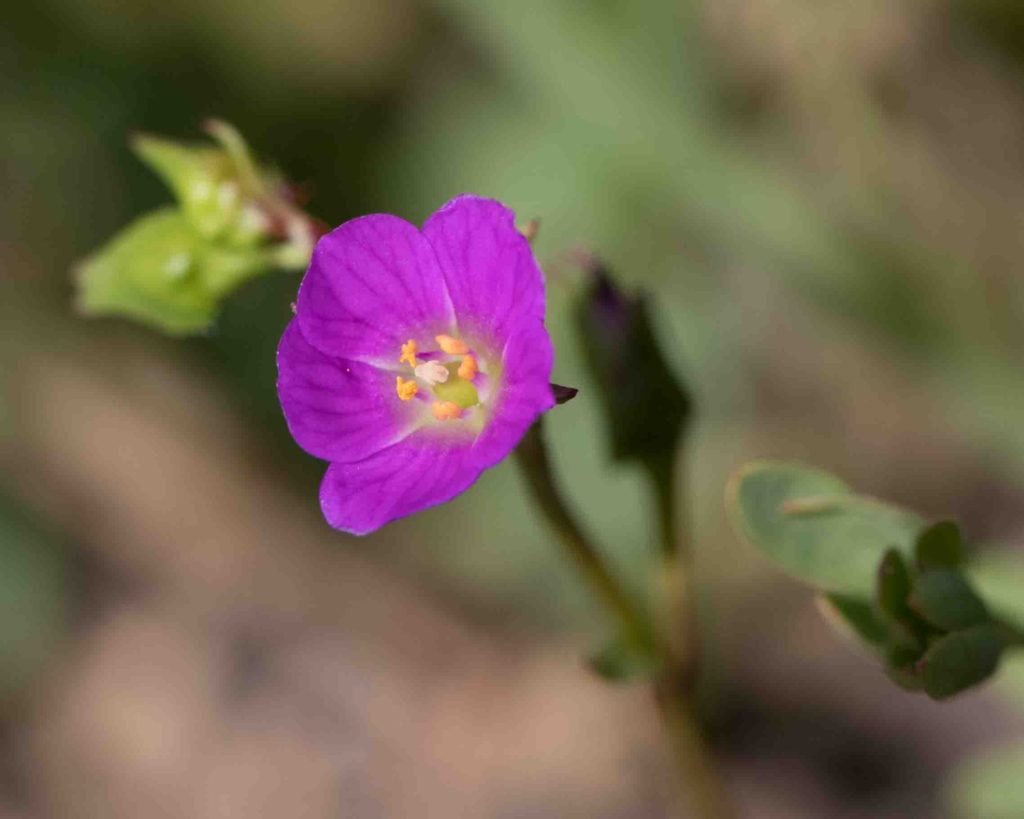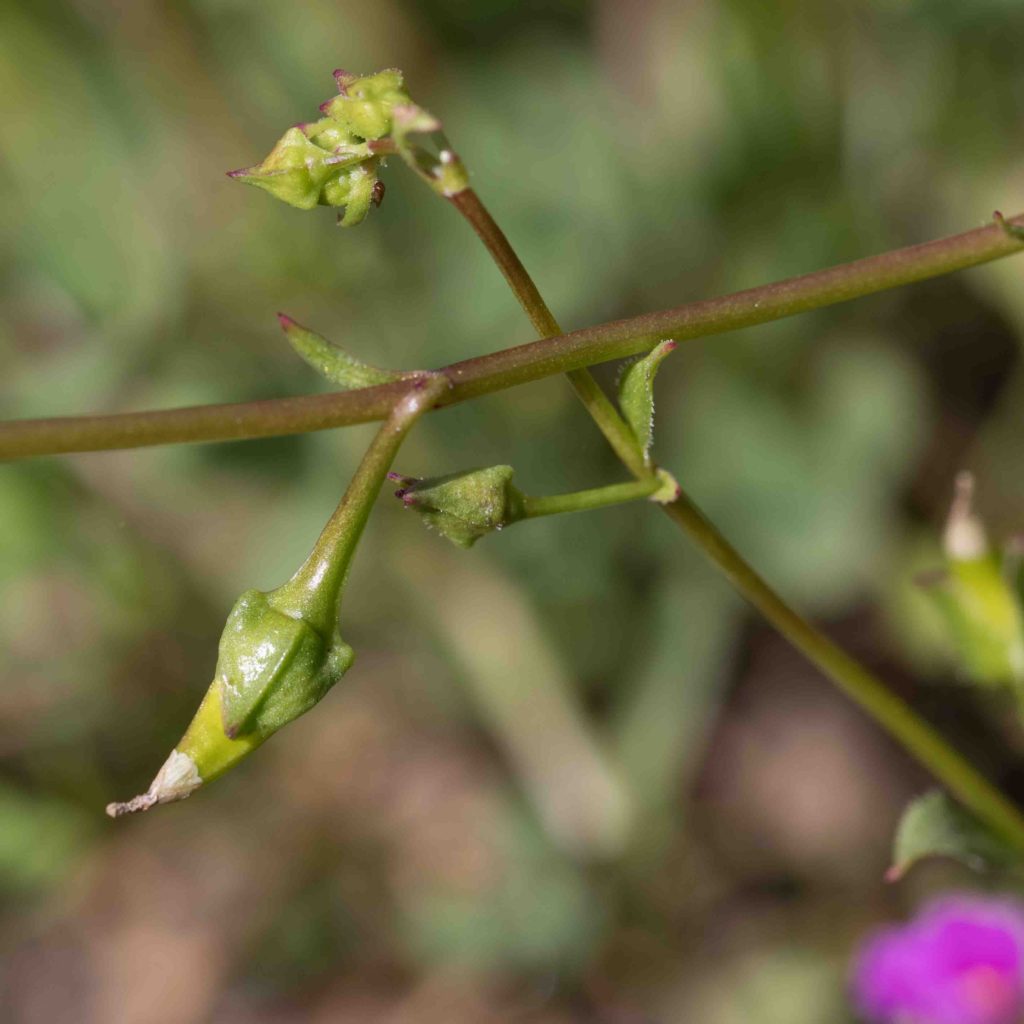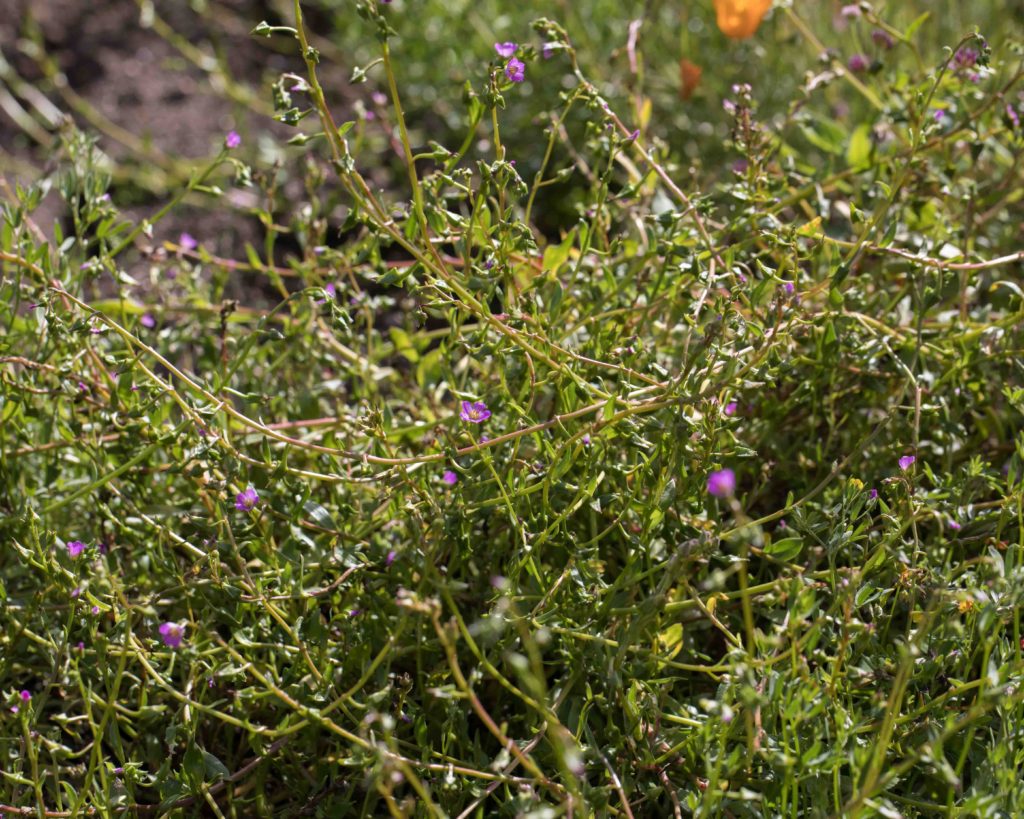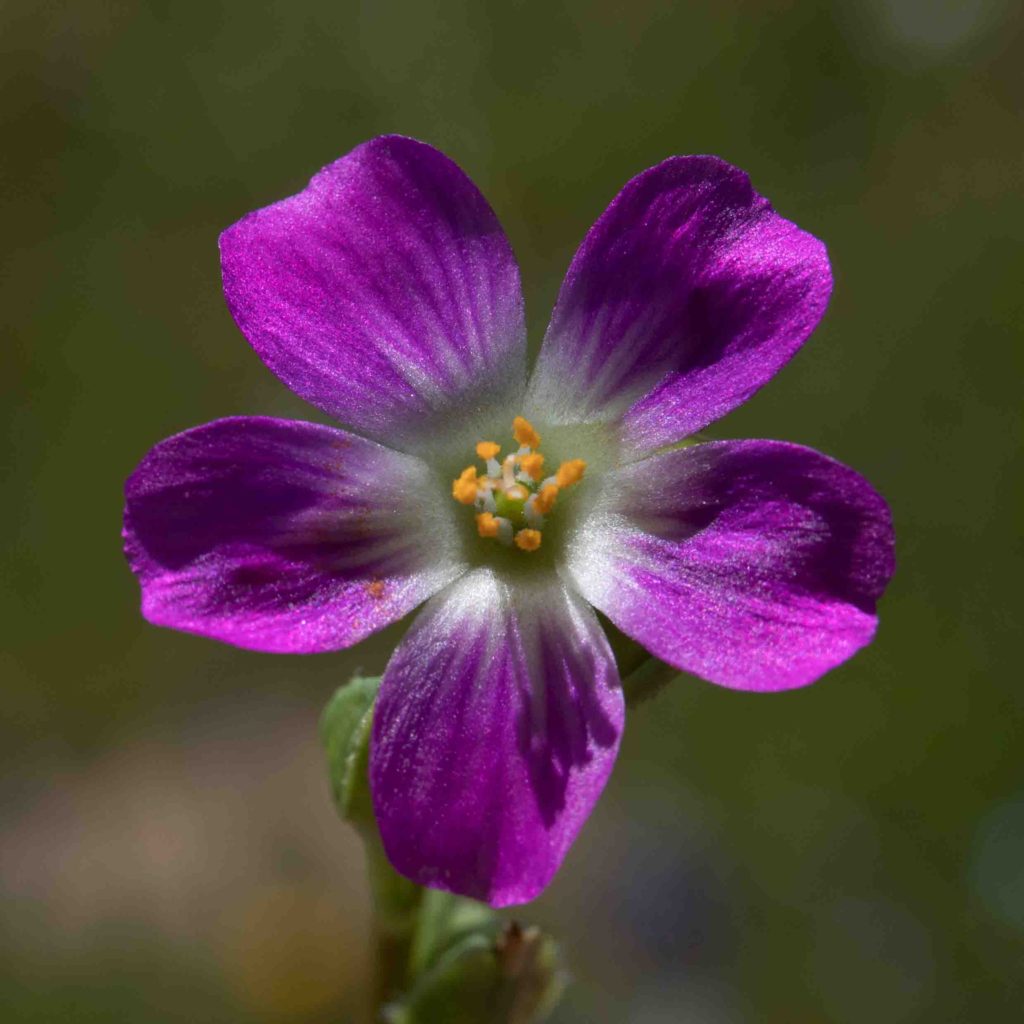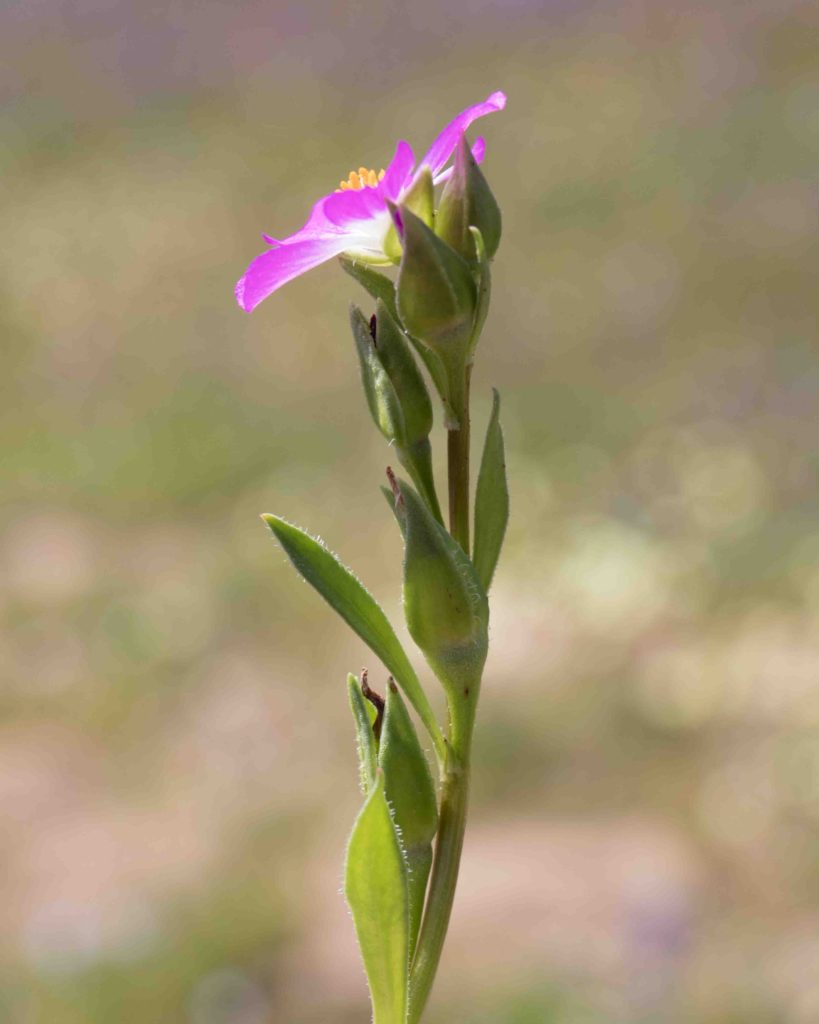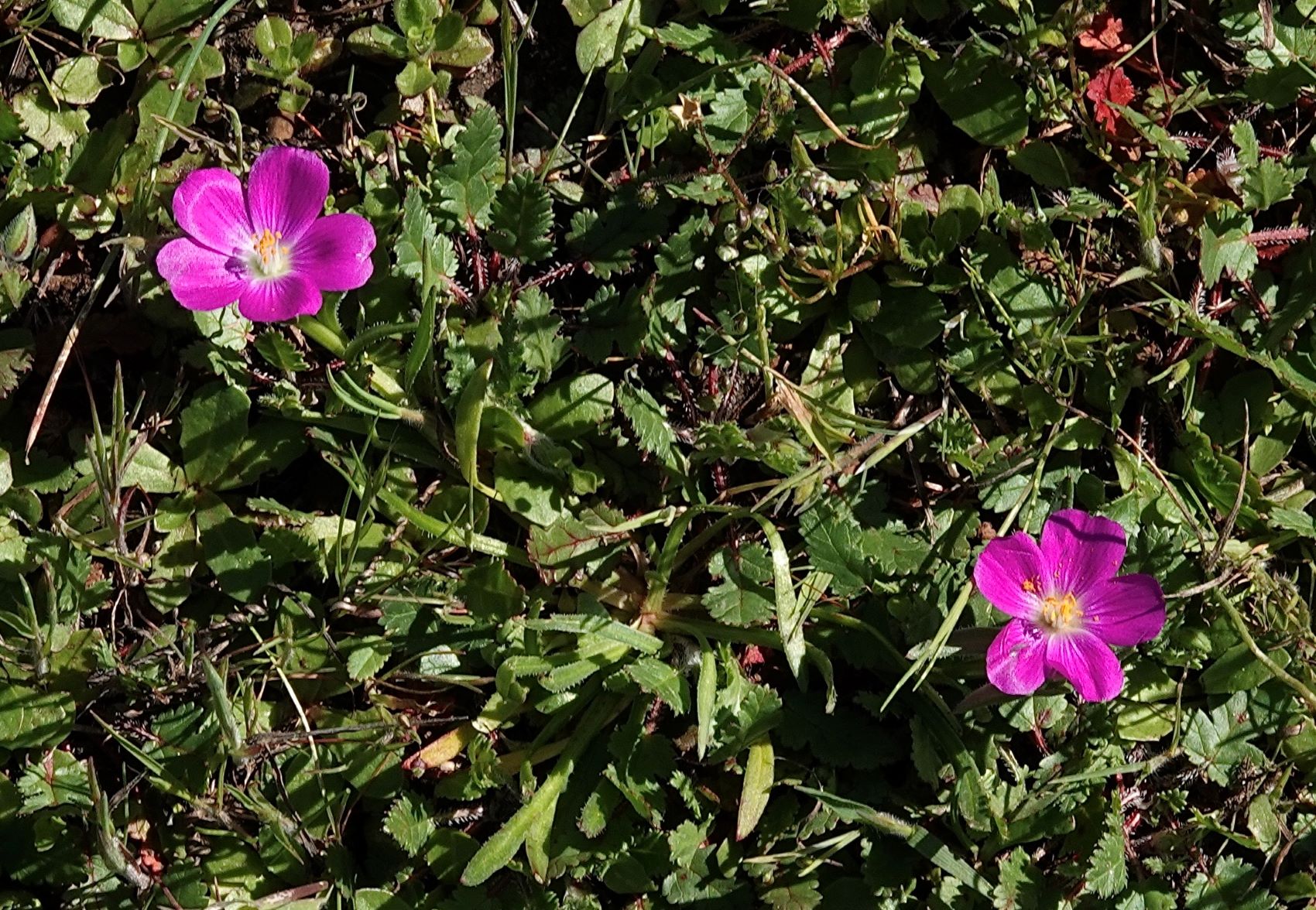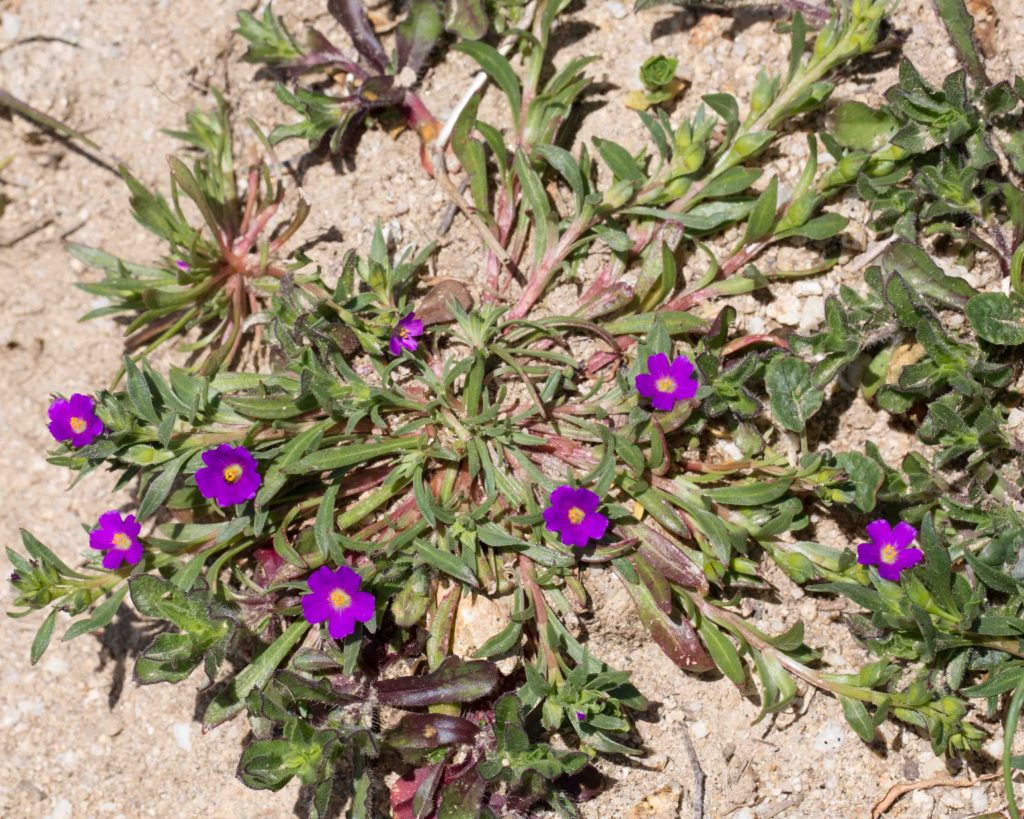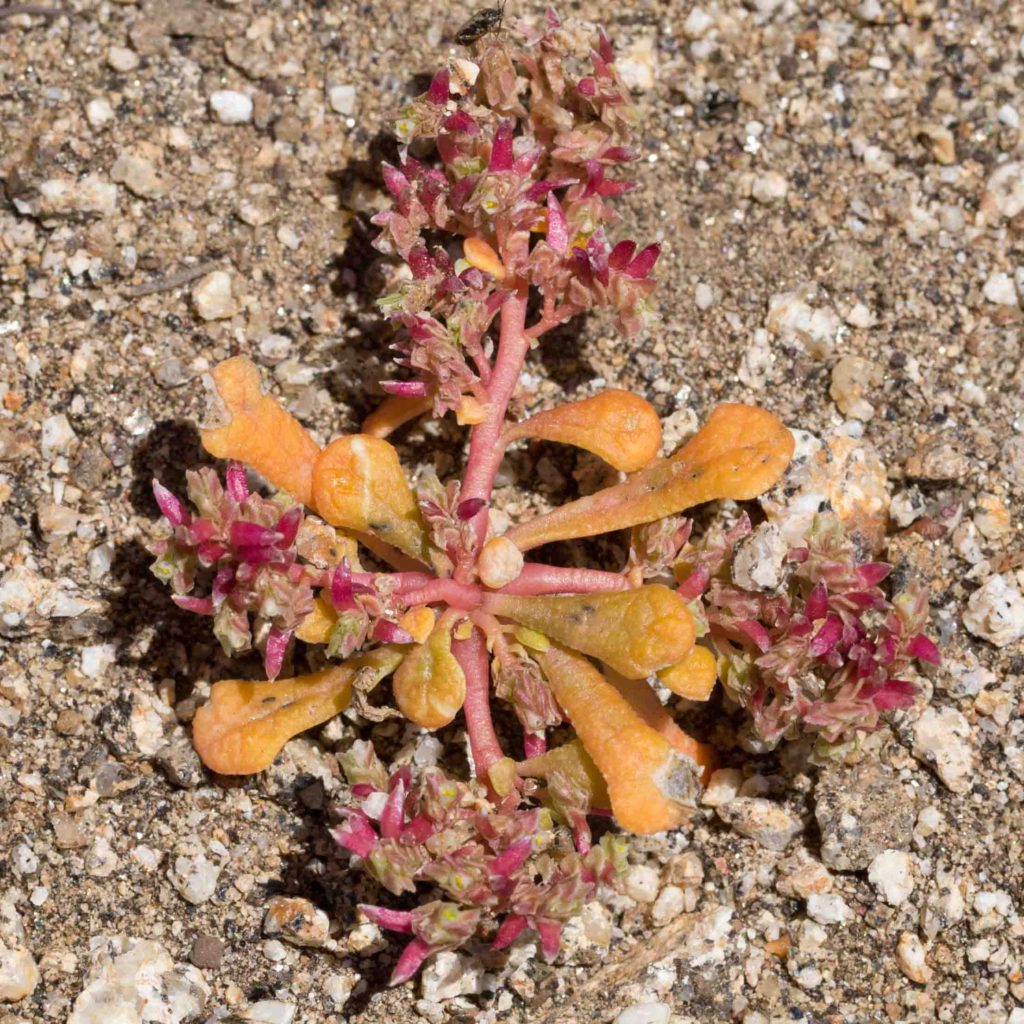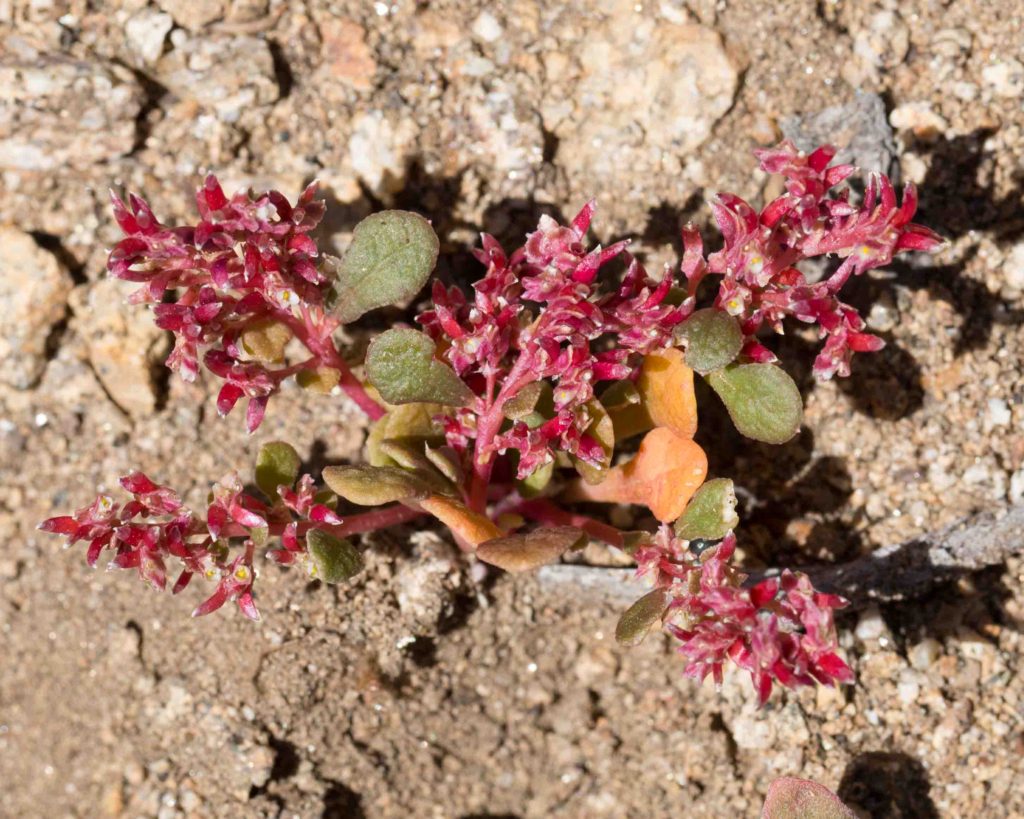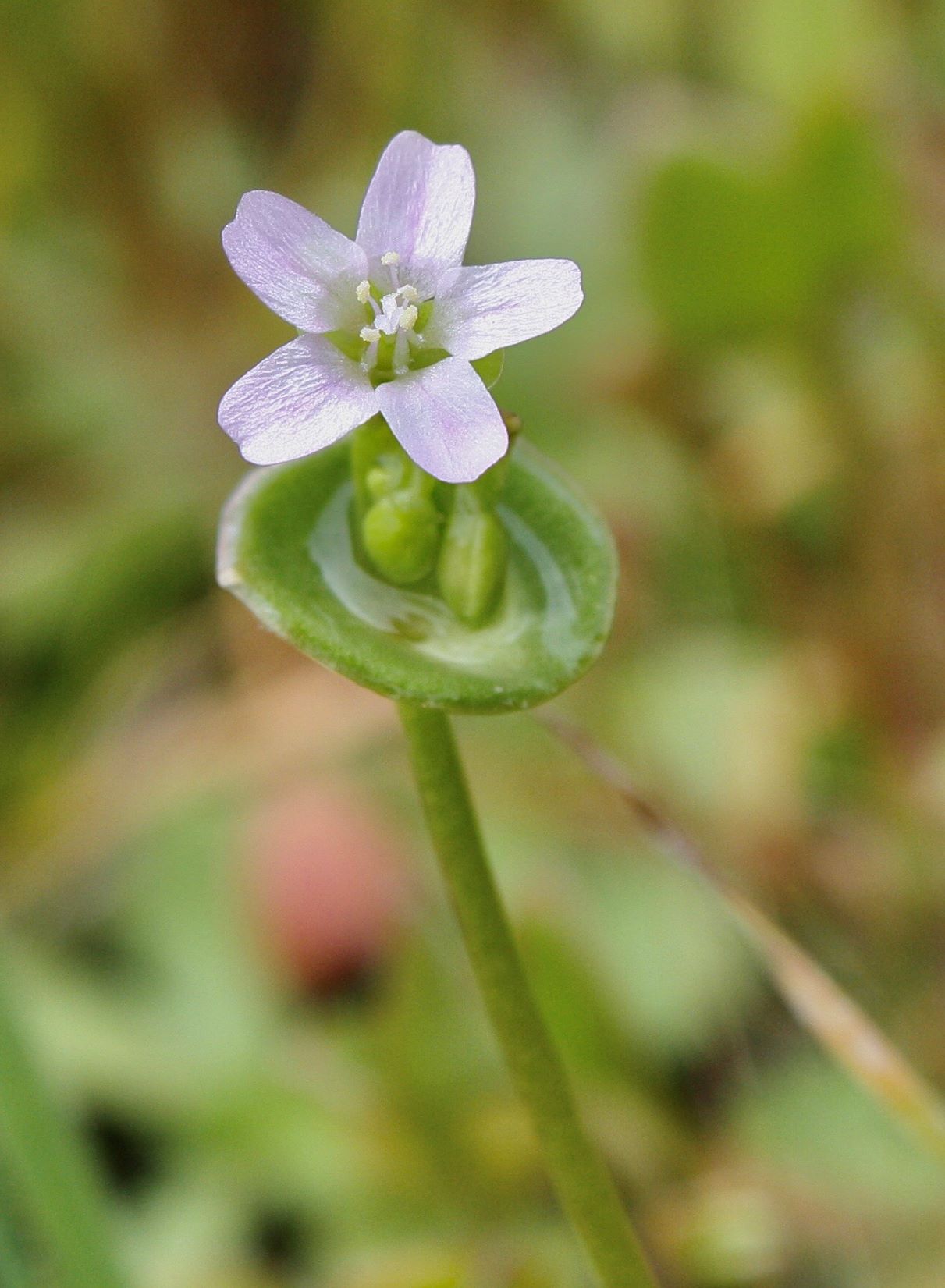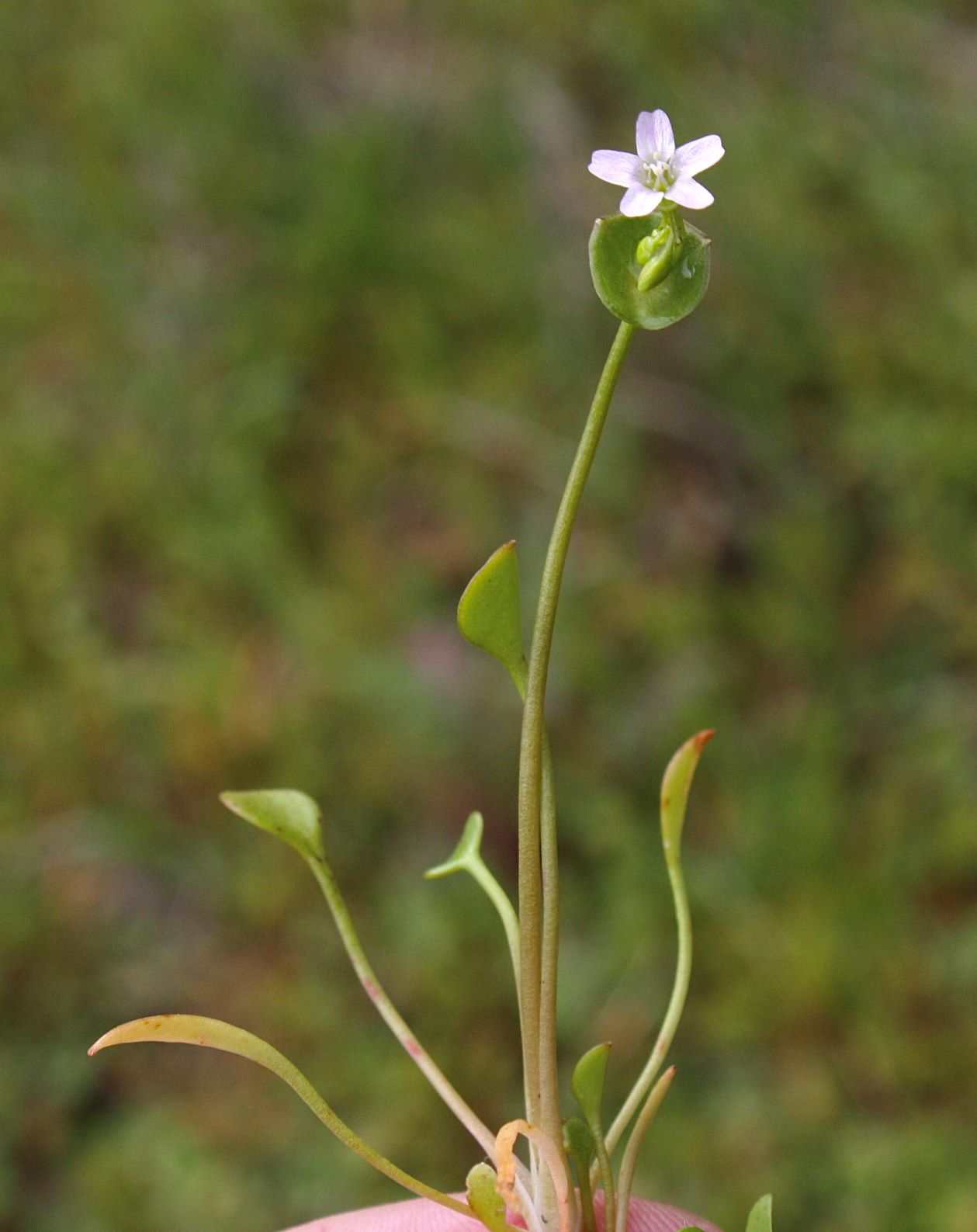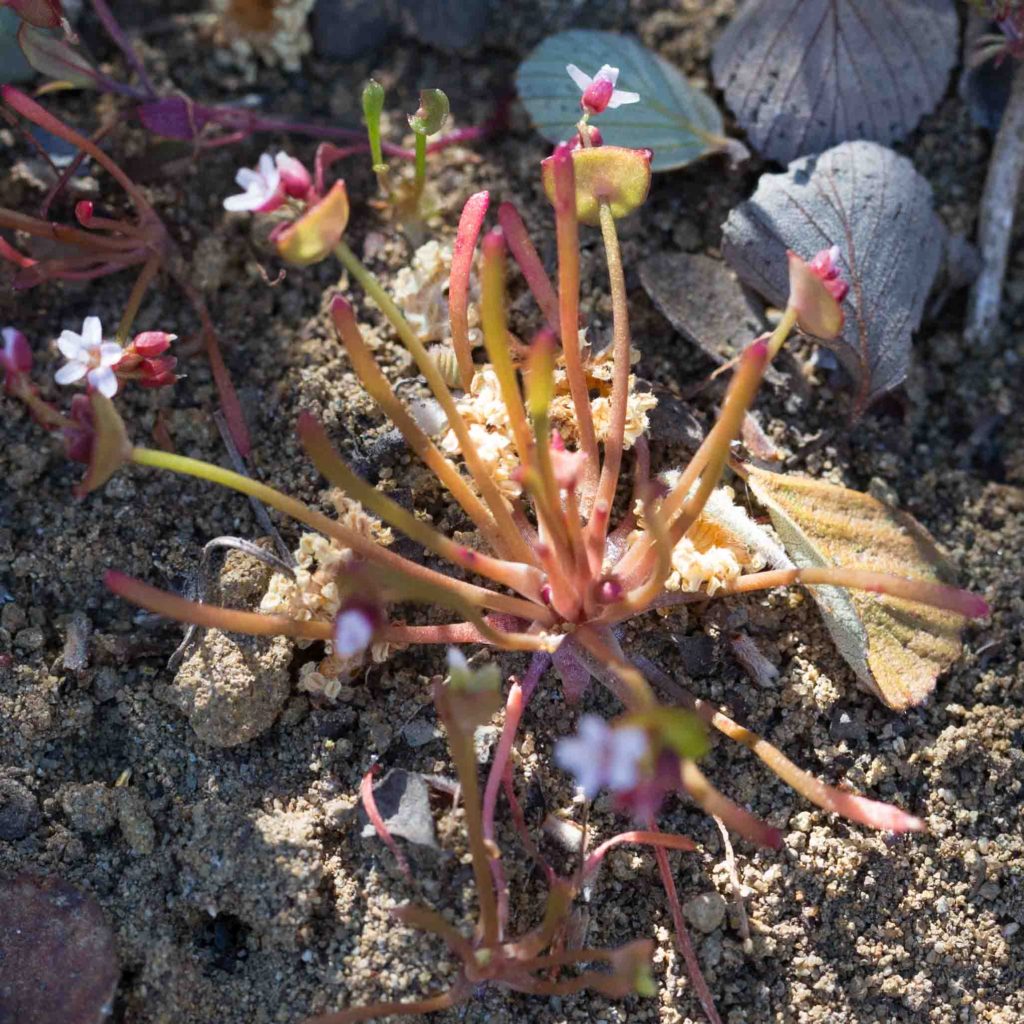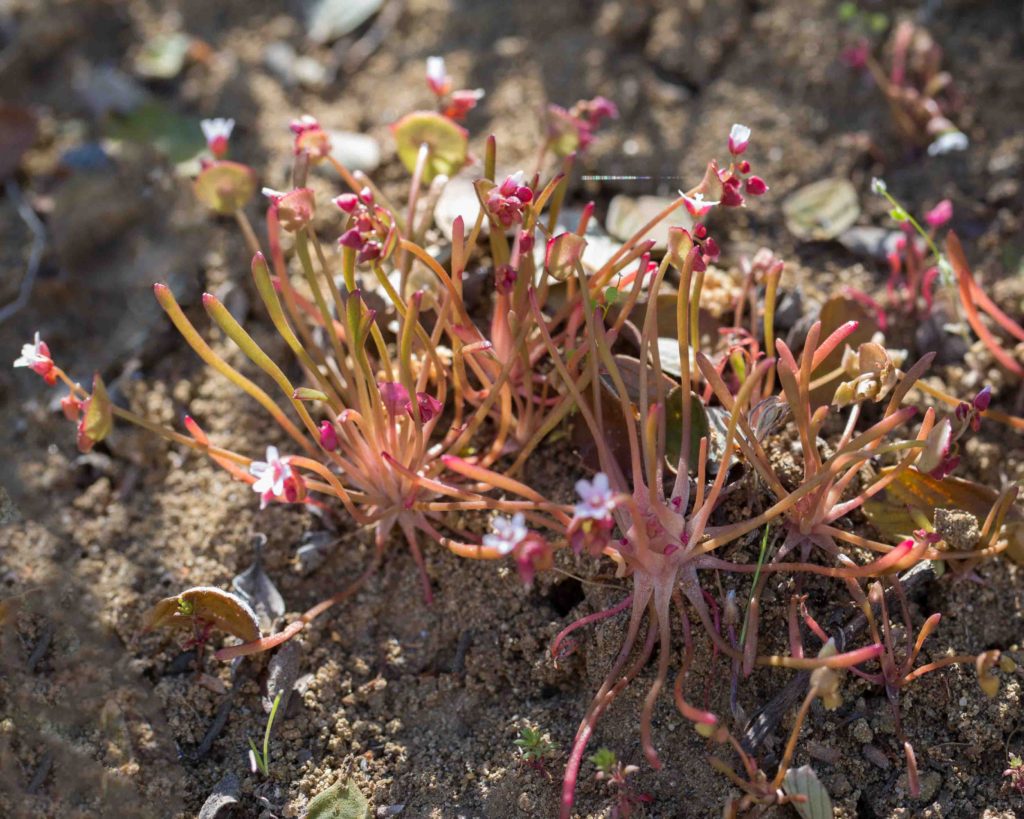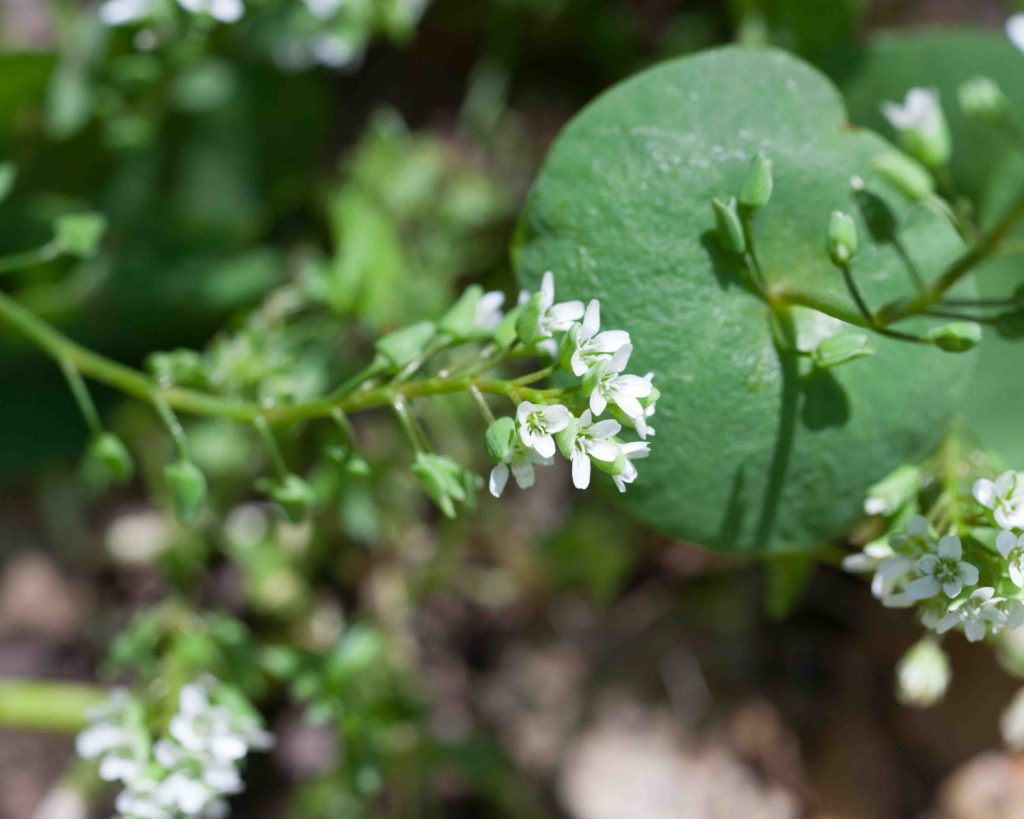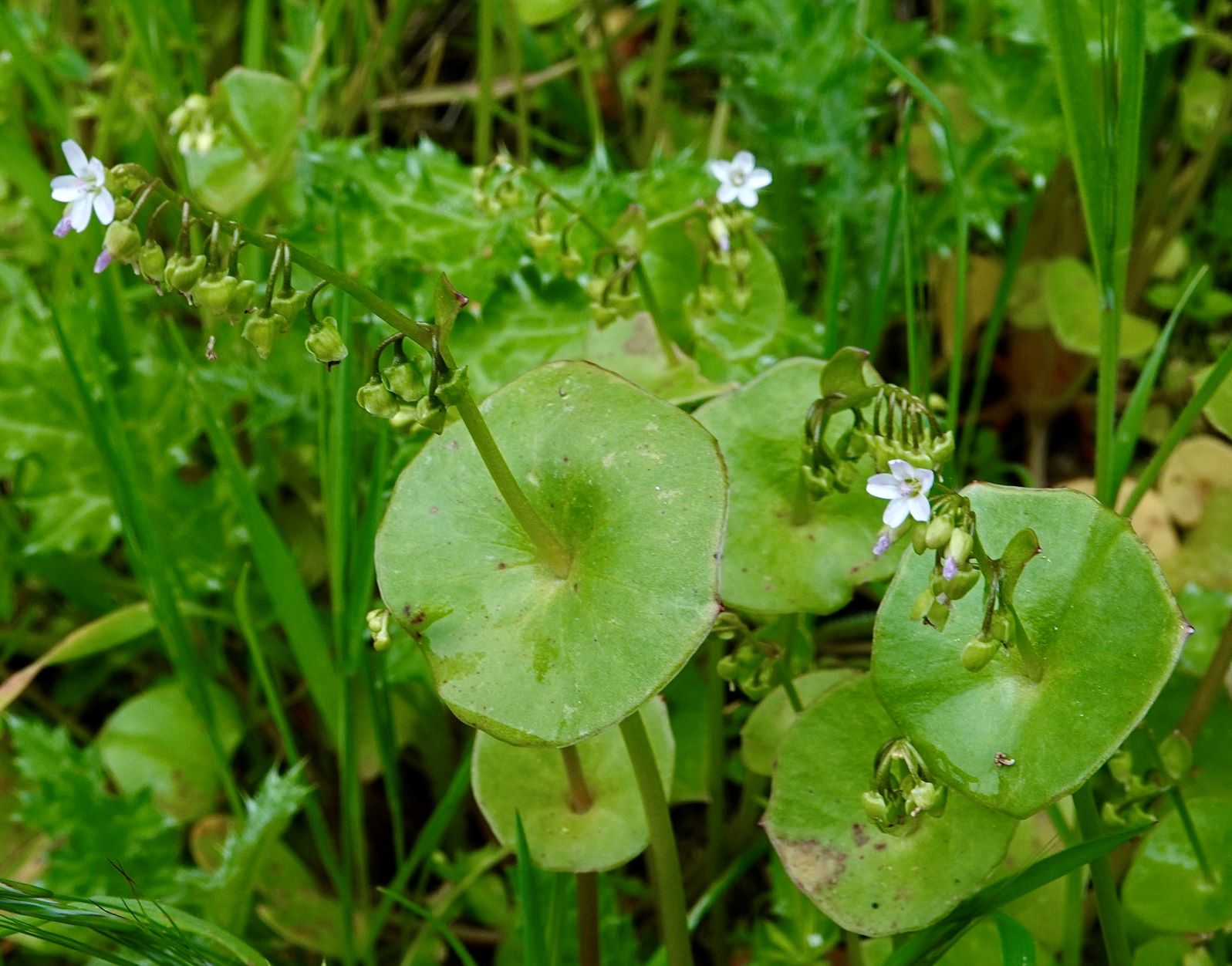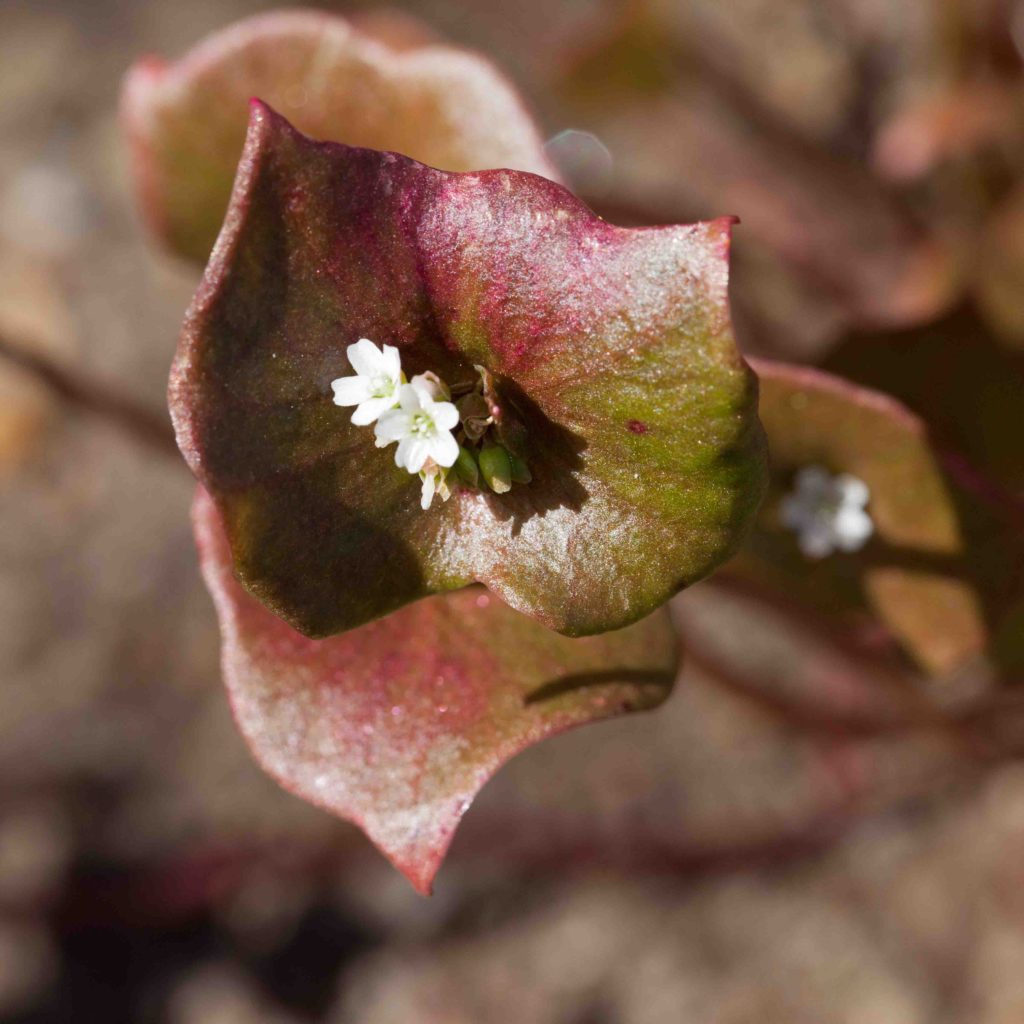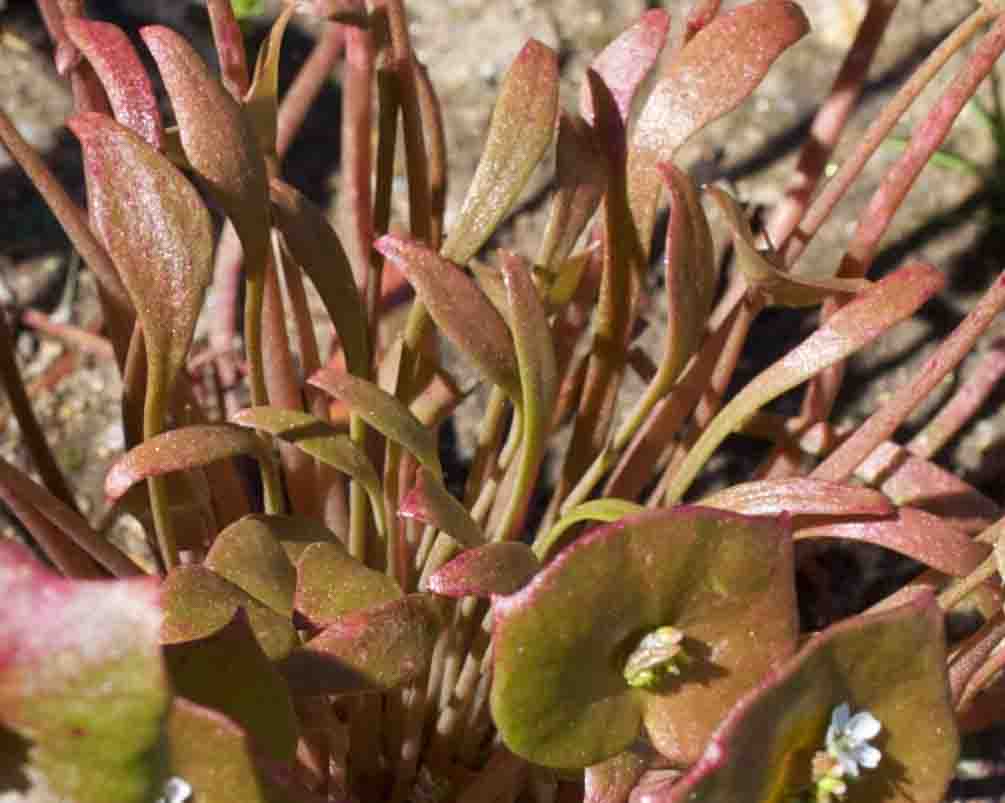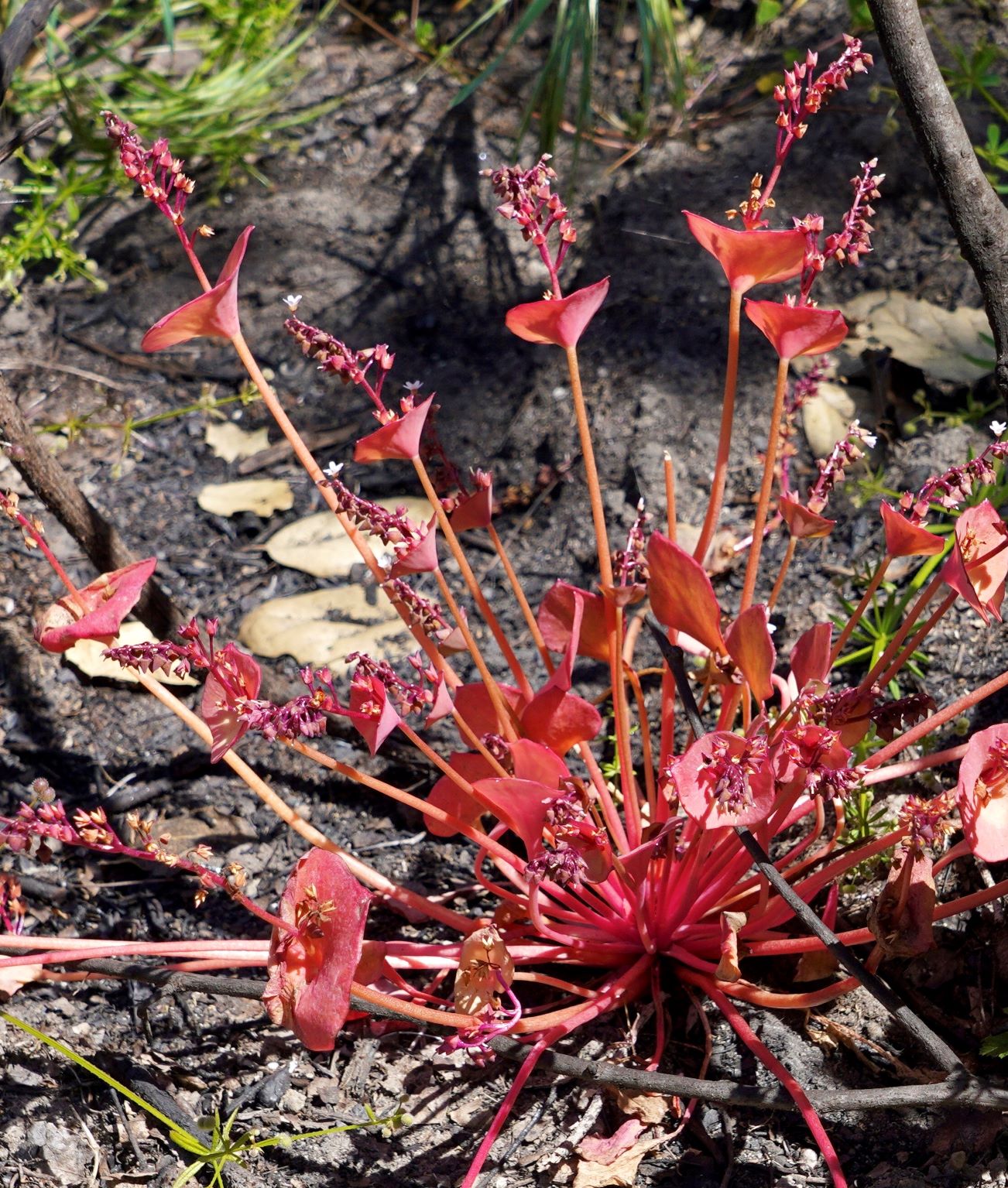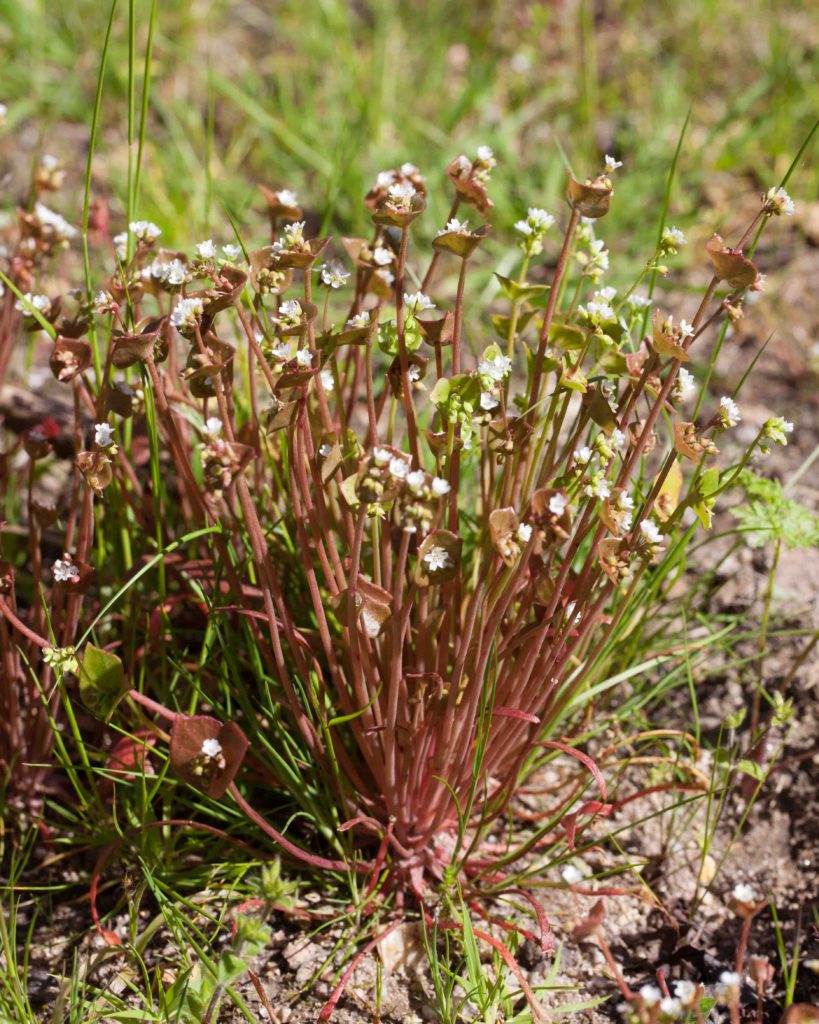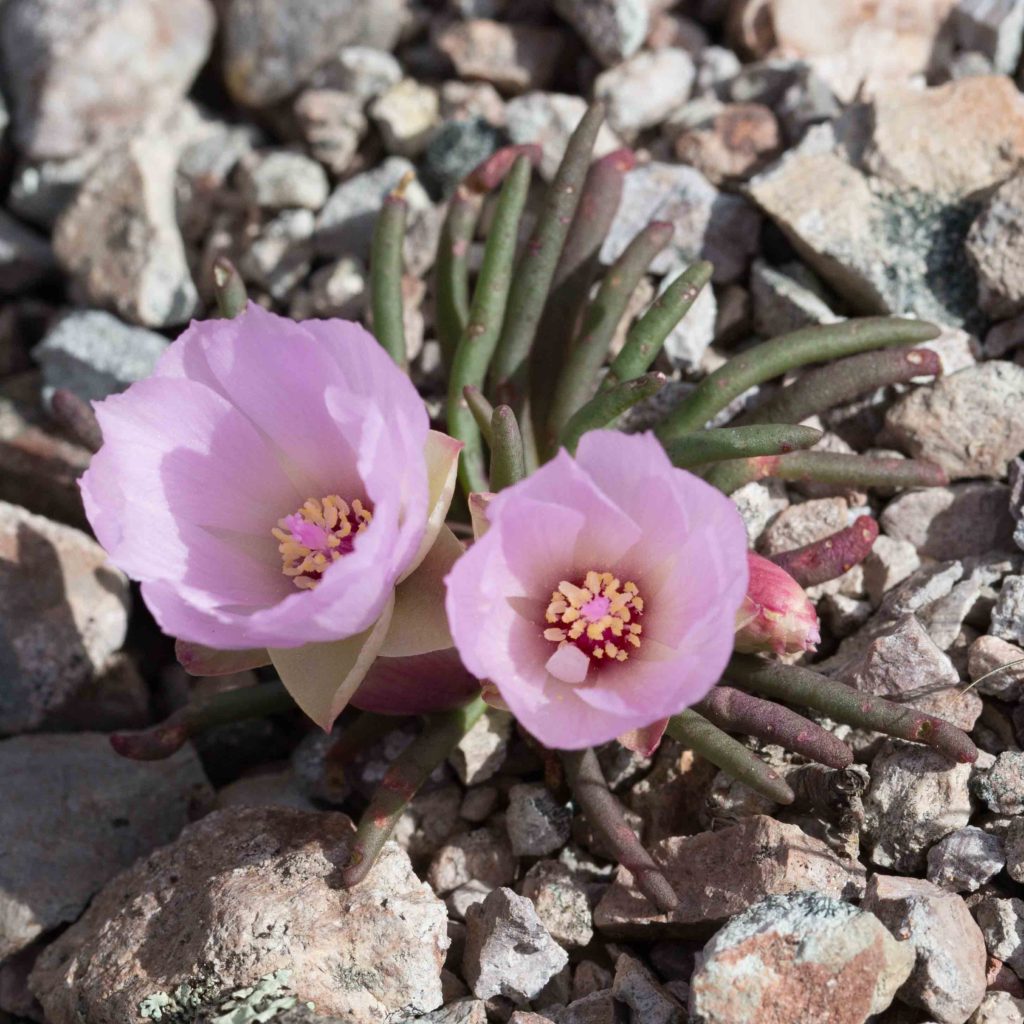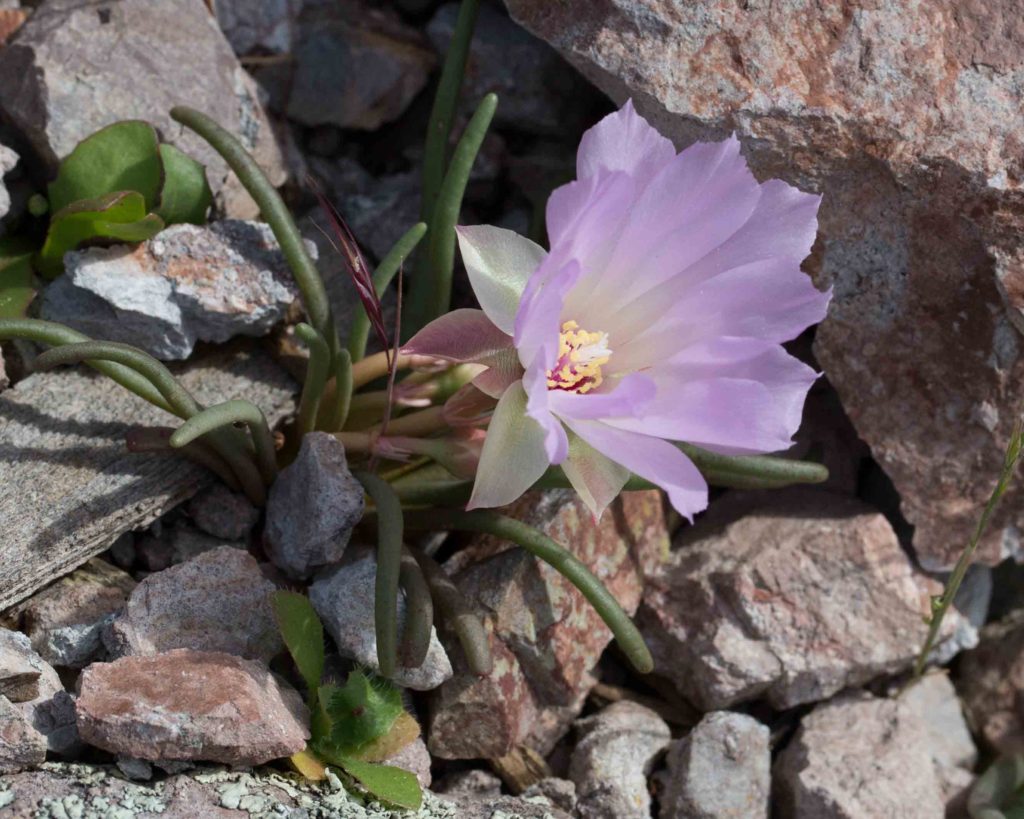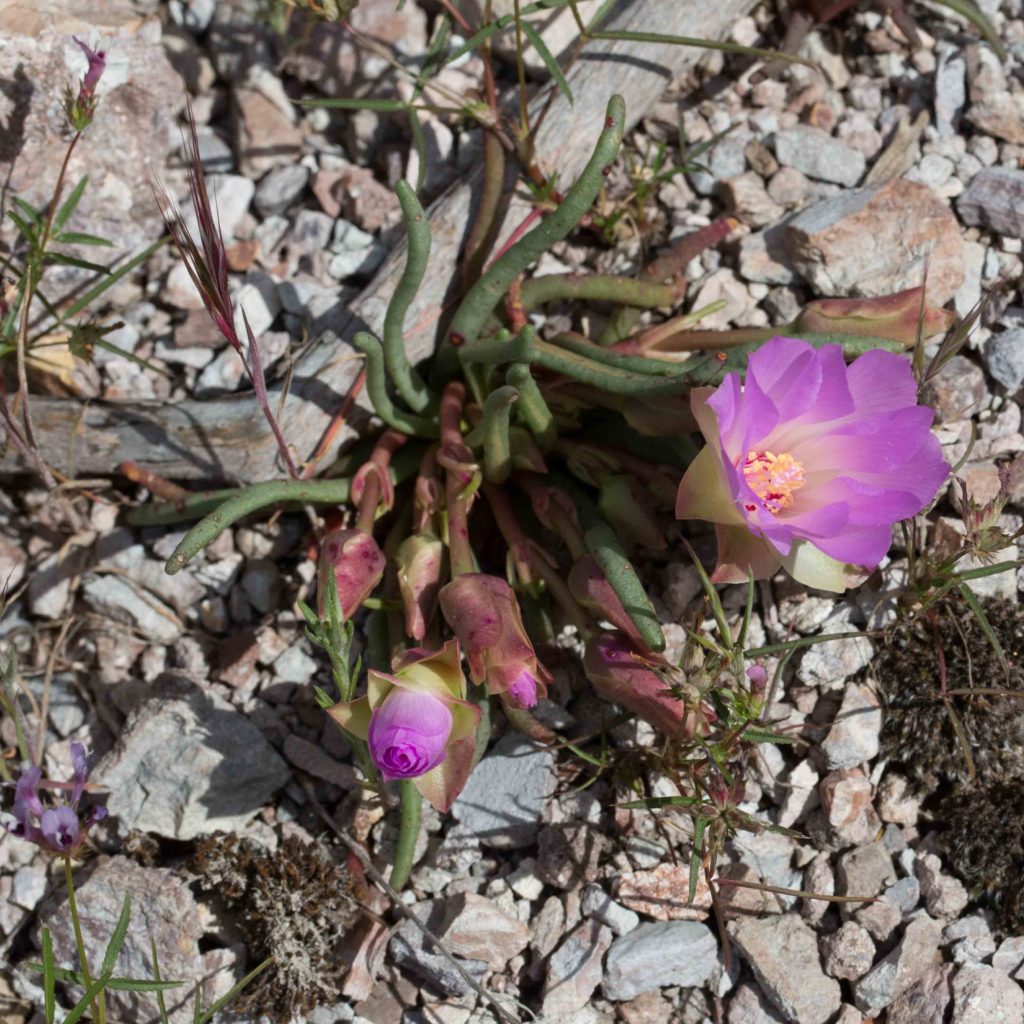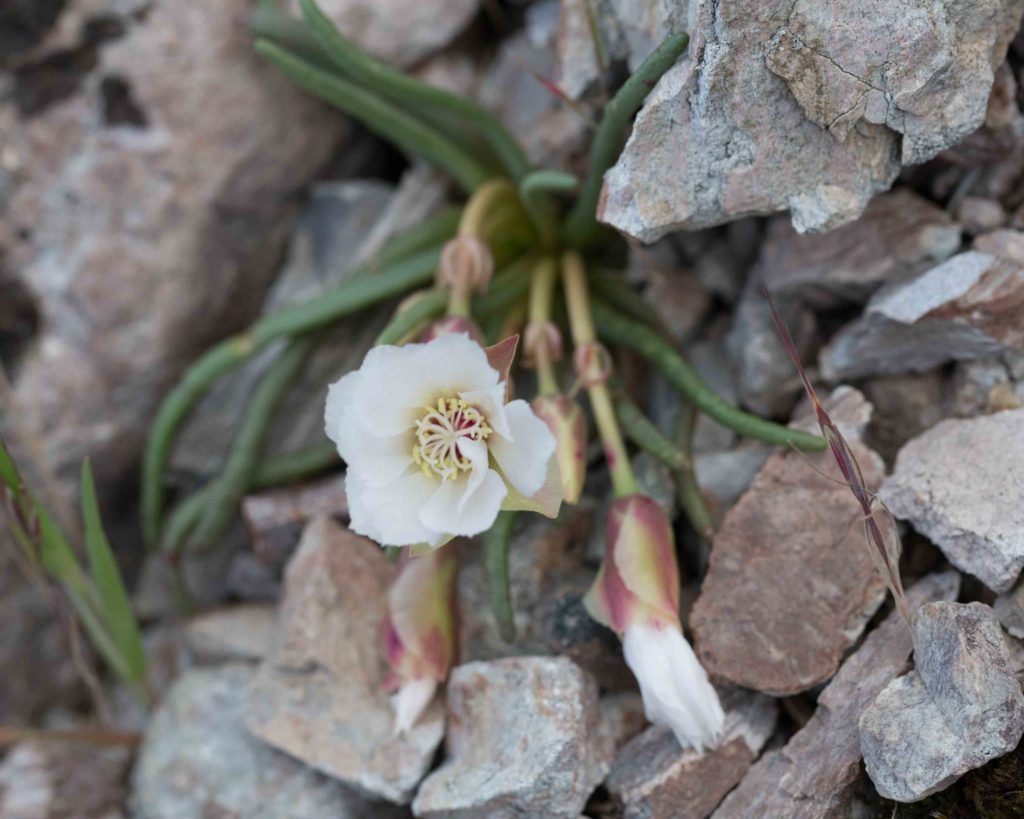Montiaceae: Miner’s Lettuce Family
Brewer’s Red Maids – Calandrinia breweri
Blooms:
Feb–May
Plant Height:
5–20 cm
Flower Size:
Medium
Origin:
Native
Rare or endangered?
Yes – 4.2
Habitat:
Grassland, mainly burns and disturbed places
Notes:
This rare calandrinia is similar to Red Maids (Calandrinia menziesii, see below). However, its stems may be ascending as well as prostrate, giving the plant a slightly bushier appearance. It can be distinguished by the number of its stamens (5–7), and by its fruits, that may be twice as long as the sepals, and protrude prominently from the calyx.
Red Maids – Calandrinia menziesii
Blooms:
Feb–May
Plant Height:
5–20 cm
Flower Size:
Medium
Origin:
Native
Habitat:
Grassland
Notes:
This is a small plant, whose flowers are an intense deep rose to red color. The flowers don’t open until late morning, but their vivid color makes them easy to spot. The leaves are linear to oblanceolate, often ciliate along the margins. This species can be distinguished from the rare Brewer’s Red Maids (Calandrinia breweri, see above), by the number of its stamens (7–14), and by its fruits, that are more or less enclosed by the calyx (clearly visible in the second photo). Photo #3 by CJH.
Common Pussypaws – Calyptridium monandrum
Blooms:
June–July
Plant Height:
Prostrate
Flower Size:
Small clusters
Origin:
Native
Habitat:
Sandy & open places, burns
Notes:
This is a prostrate plant with a rosette of fleshy, spatulate 1–6 cm leaves. It has reddish stems, and clusters of tiny white or reddish flowers surrounded by three triangular sepals. The fruits are linear, 2–4 times as long as the sepals, visible in the second photo.
Narrow-leaved Miner’s Lettuce – Claytonia parviflora subsp. parviflora
Blooms:
Mar–June
Plant Height:
5–15 cm
Flower Size:
Small
Origin:
Native
Habitat:
Vernally moist, often disturbed places
Notes:
This is less common than Miner’s Lettuce (Claytonia perfoliata, see below). It has similar flowers, but much smaller leaves (< 5 cm, about half the size of Miner’s Lettuce). The leaves and stems may be green or reddish. The basal leaves are distinctive, long (1–18 cm), and linear to oblanceolate. Cauline leaves are shorter (less than 6 cm). They may be elliptic, diamond-shaped, or fused into a round or squarish disk subtending the flowers. Photos #1-2 by CJH.
Rooreh (Miner’s Lettuce) – Claytonia perfoliata subsp. perfoliata
Blooms:
Jan–May
Plant Height:
< 40 cm
Flower Size:
Small clusters
Origin:
Native
Habitat:
Vernally moist, shady places
Notes:
Extremely common, sometimes weedy and most easily recognized by its large leaves, which completely surround the stem. The first leaves to appear in spring are almost linear, gradually developing into the roundish leaves of the mature plant. The small flowers are white or pinkish, with a few appearing first on a short peduncle just above the leaf. The peduncle gradually lengthens, and more flowers appear, as many as 40 in a small or elongated cluster. The new common name Rooreh replaces the former “Miner’s Lettuce” (this plant has been a human food source for centuries). Photo #4 by CJH.
Redstem Springbeauty – Claytonia rubra subsp. rubra [& subsp. depressa]
Blooms:
Feb–April
Plant Height:
< 15 cm
Flower Size:
Small
Origin:
Native
Habitat:
Open, often disturbed areas & scrub
Notes:
This can be confused with Narrow-leaved Miner’s Lettuce (Claytonia parviflora, see above), with leaves and stems that may be green but are generally reddish. It is distinguished by the shape of its basal leaves, which have blades less than 3 times as long as wide, tapering abruptly into the petiole. The two subspecies are distinguished by the shape of their basal leaves. Subsp. rubra has basal leaves which are elliptic to obovate, with a wedge-shaped base, while subsp. depressa (right hand photo) has basal leaves which are diamond-shaped to deltate, and more or less truncate at their base. The fused cauline leaves have a noticeably angular appearance. Photo #3 by CJH.
Bitterroot / Lewisia – Lewisia rediviva var. rediviva
Blooms:
Mar–June
Plant Height:
Prostrate
Flower Size:
Large
Origin:
Native
Habitat:
Rocky or sandy ground in scrub or open conifer woodland
Notes:
The plant is more or less prostrate with a rosette of linear, fleshy leaves. Flowers are pink to white, 18–35 mm across, varying from narrowly bowl-shaped to wide open and flat. Uncommon, found only in the Indians, Fort Hunter Liggett and Pinnacles.
